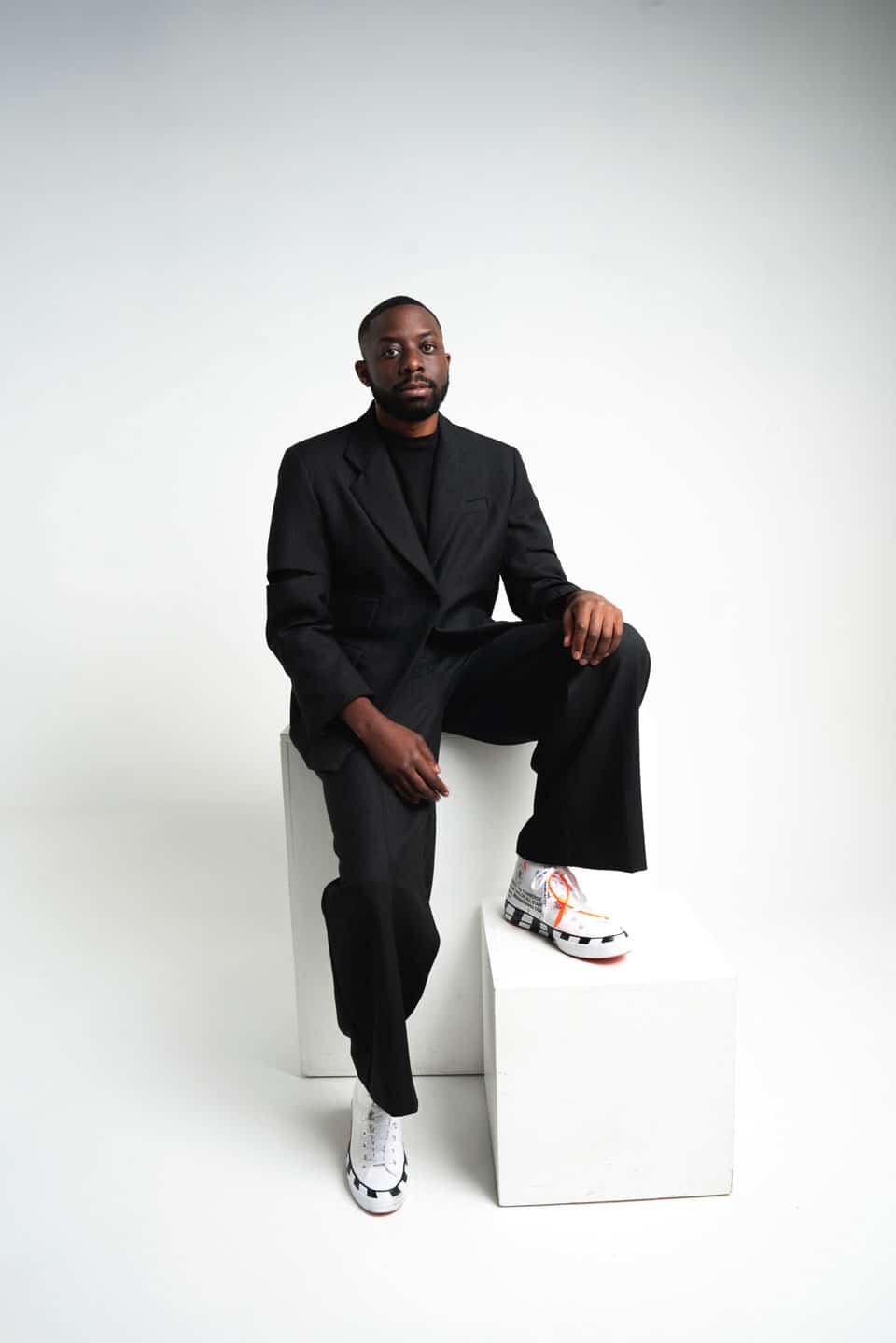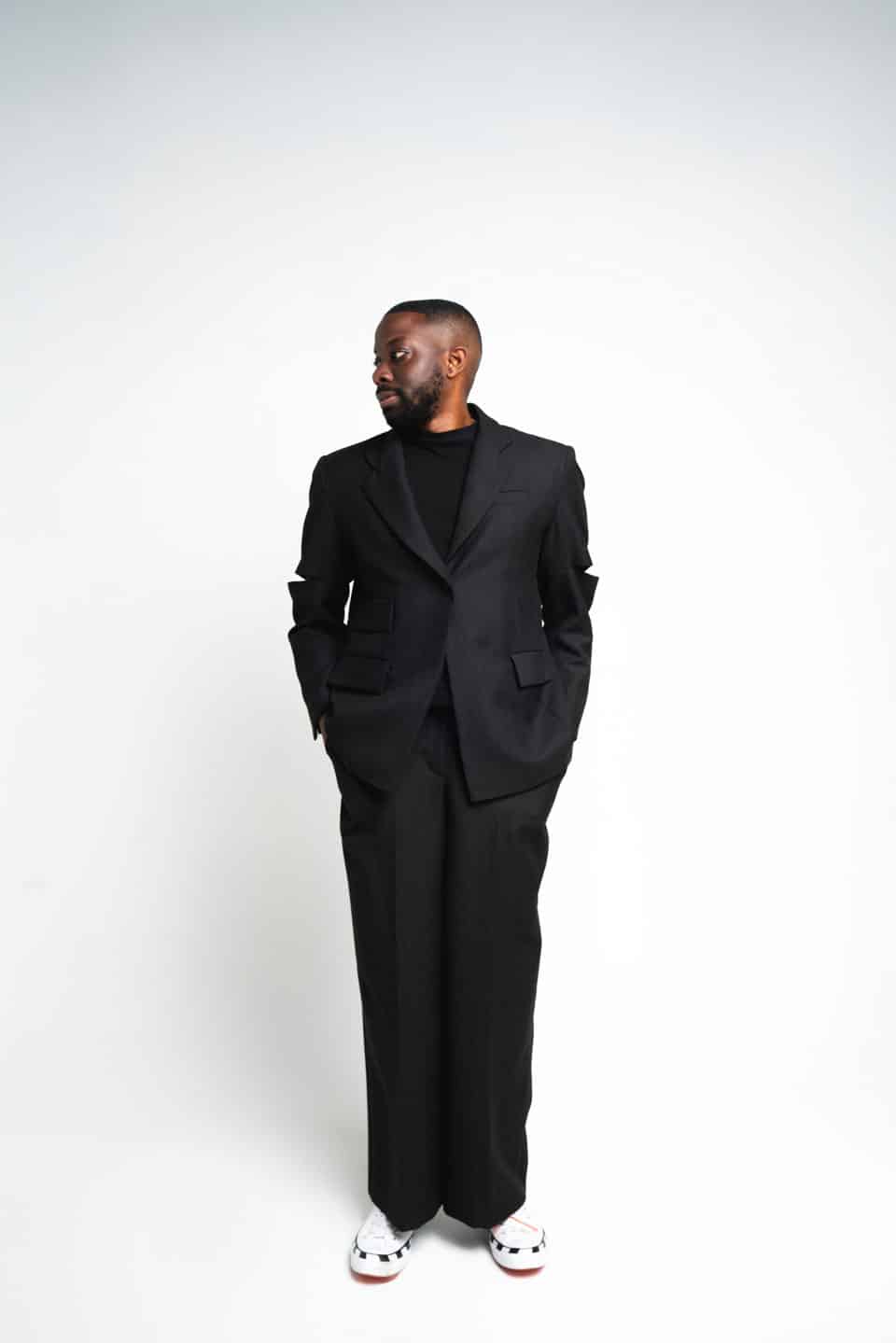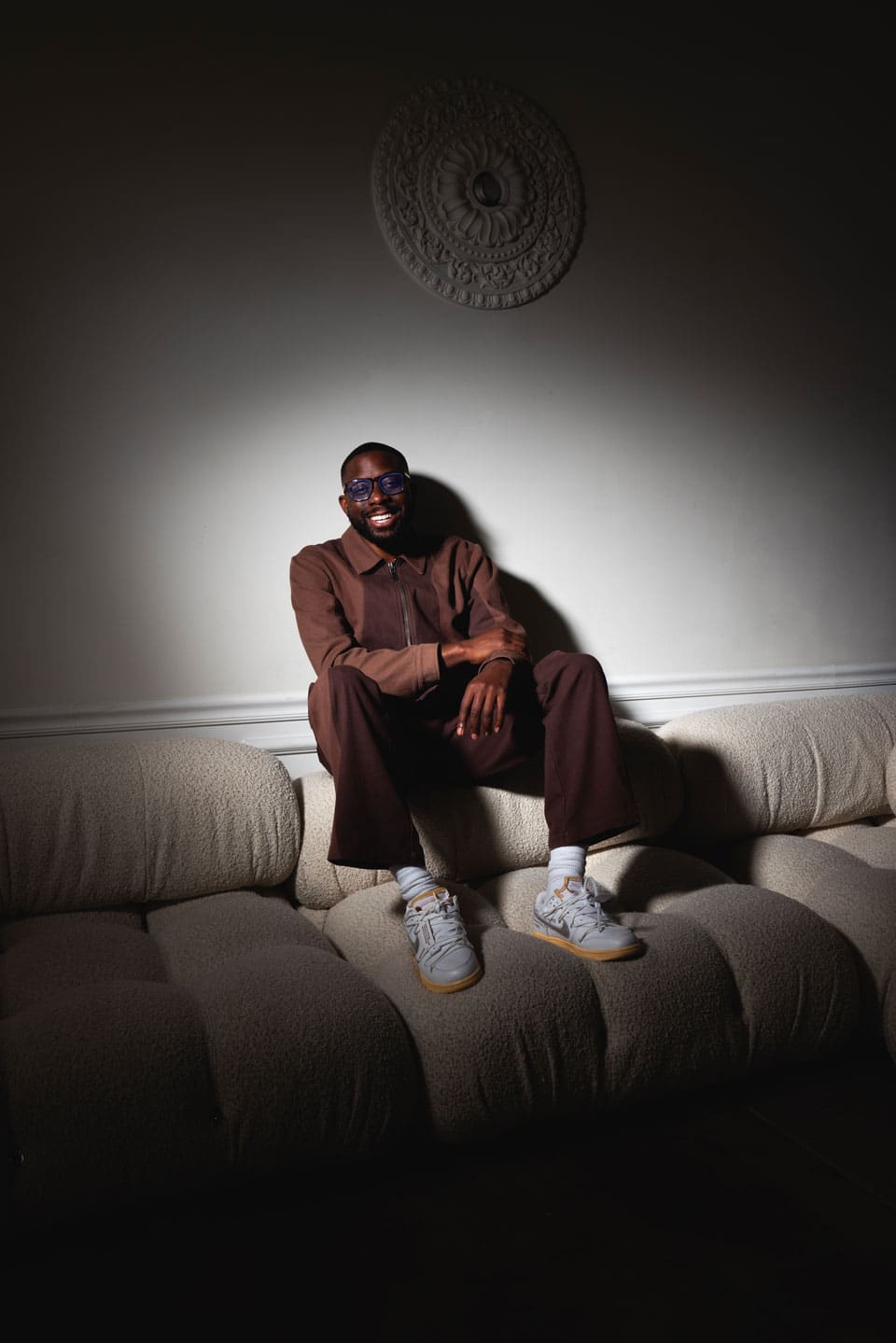Interview: John Imah, CEO of a Stealth Startup

When did your love of fashion begin? Were you always the fashionable cool kid?
John Imah: My journey into the world of fashion began in the colorful corridors of my childhood home, under the influence of my mother’s impeccable taste. She was a true fashionista, someone whose sense of style was both innate and inspiring. From a young age, she curated my wardrobe with an eclectic mix of garments. Admittedly, my young self didn’t fully appreciate the sartorial lessons being imparted. It was a blend of reluctant participation and subtle awe as I watched the world of colors and textures unfold before me.
The real epiphany came during my high school years. By then, I was deeply entrenched in the world of technology—a realm often characterized by its minimalist, function-over-form dress code. However, I realized that my heart beat equally for the vibrant and expressive language of fashion. It was a revelation, a merging of two seemingly disparate worlds. I saw fashion not just as a means of personal expression, but as a tool for challenging stereotypes. The notion that individuals in tech are indifferent to fashion seemed outdated to me. I wanted to debunk this myth, to showcase that one could be both a tech enthusiast and a fashion aficionado.
Embracing fashion allowed me to become what I would describe as the “cool kid,” but it was more than just about standing out. It was about merging my passions, about showing that the tech world and the fashion industry are not parallel lines that never meet, but rather intersecting paths that can enhance and enrich one another. My style became a statement, a conversation starter, and a way to subtly shift perceptions. It was, and still is, about proving that we can redefine norms and create a new narrative for the tech community—one where creativity, innovation, and style go hand in hand.

You have worked at some major tech companies, Meta, Snap,Samsung-How did you break into partnerships and business development within the technology world?
John Imah: My entry into the realms of partnerships and business development in the technology sector is a testament to my entrepreneurial spirit and engineering background. In the early days of my career, entrepreneurship was the crucible where my multifaceted skill set was forged. As an entrepreneur, you’re thrust into a world where versatility isn’t just an asset; it’s a necessity. You learn to navigate through uncharted territories, wearing multiple hats, constantly switching between roles. This environment was my proving ground, challenging me to stretch beyond the confines of traditional engineering roles and delve into the business intricacies that drive technology forward.
This duality of interests—my technical foundation and a burgeoning passion for the strategic aspects of business—became one of my many unique selling propositions. It was this blend of skills that opened doors for me at leading tech companies such as Meta, Snap, and Samsung. I approached these opportunities not just as an engineer with a knack for technology, but as a strategic thinker with a deep understanding of how technological solutions can be aligned with business objectives to create meaningful partnerships and drive growth.
Embracing the business side of things, I found myself at the intersection of technology, where I could leverage my technical background to inform business strategies, and vice versa. This synergy between technology and business has been the cornerstone of my career, allowing me to contribute significantly to the companies I’ve had the privilege of working with. It’s a journey that underscores the importance of adaptability, continuous learning, and the willingness to embrace and integrate diverse aspects of one’s skill set to meet the evolving demands of the tech industry.
Is there a partnership that you are most proud of that you were responsible for spearheading via those major tech players?
John Imah: Reflecting on the myriad partnerships I’ve had the honor of spearheading across major tech companies, it’s challenging to pinpoint just one that stands out above the rest. Each partnership, whether it was with giants in sports, fashion, gaming, or the burgeoning fields of AR/VR, has been a milestone, not only in my career but also in the journey of the teams I’ve led.
Leading teams that have forged partnerships with industry leaders like Nike, Google, Coca-Cola, Activision Blizzard, Condé Nast, and Dior, to name a few, has been both a privilege and a profound learning experience. These collaborations span a wide spectrum of industries, each bringing its unique challenges and opportunities for innovation.
If I had to highlight one partnership that embodies the essence of what we’ve strived to achieve, it would be our collaboration with Nike. This partnership stands out not just for its scale but for the way it seamlessly integrated technology with fashion and sports, creating a holistic experience that resonated with consumers globally. It was a testament to our team’s ability to understand and meld the DNA of both companies, crafting innovative solutions that pushed the boundaries of what’s possible at the intersection of tech and lifestyle.
The success of these partnerships goes beyond just the signing of agreements; it’s about the lasting impact they’ve had on the industry, driving innovation, and setting new standards for what collaborative success looks like. It’s a testament to the collective effort, creativity, and vision of the teams I’ve had the privilege to lead and work with. Together, we’ve not only achieved significant milestones but also paved the way for future innovations that continue to inspire and challenge the industry.
Were you the most fashionable person in the office? Don’t be shy! Tell us.
John Imah: Haha, without aiming to eclipse the stylish flair of my colleagues, I’d venture to say, yes, I believe I was among the most fashionable people in the office! It’s a title I wear with a mix of pride and amusement, largely because it’s not self-proclaimed but a reflection of the generous feedback I received from my peers on a regular basis. What truly delights me about this recognition isn’t just the affirmation of my sense of style but how it complemented my professional contributions.
Fashion, to me, is more than just attire; it’s a form of expression, a way to communicate without words, and an extension of one’s creativity. Integrating this personal passion with my commitment to impactful work created a unique blend that I like to think added a vibrant layer to the office culture. It was heartening to see that my efforts to break the mold and introduce a bit of sartorial elegance into the tech world were not only noticed but celebrated.
Being known for both my professional achievements and my fashion sense was a wonderful validation that you can indeed mix passion with profession. It underscored the idea that being true to oneself can enrich not only your own work experience but also inspire those around you. It’s a testament to the power of authenticity and the unexpected ways it can contribute to a positive and dynamic work environment.
How do you choose your style for meetings versus day-to-day as one of the most fashionable men in tech?
John Imah: Choosing my style for meetings versus day-to-day wear is a process that begins with understanding the audience and the nature of the meeting. Recognizing whether the setting is formal or informal is important because it sets the tone for how I present myself. It’s not just about adhering to expected norms but about using fashion as a tool to facilitate communication and connection. For formal meetings, I lean towards attire that respects the occasion’s seriousness, opting for pieces that are polished yet infused with elements of my personal style. This could mean a classic suit with a unique tie or accessories that add a touch of individuality.
For day-to-day wear or more informal settings, I embrace the freedom to express my mood and personality more fully through my clothing choices. This might involve experimenting with bold colors, unique textures, or contemporary silhouettes. It’s about striking a balance between professionalism and personal expression, always ensuring that my attire is appropriate for the workplace while still reflecting who I am.
Ultimately, my approach to fashion in the tech industry is about authenticity. It’s about making deliberate choices that signal not just my role as a professional but as an individual with a distinct perspective and personality. I view my style as a form of non-verbal communication, a way to convey confidence, creativity, and approachability. Whether it’s a high-stakes meeting or a regular day at the office, my goal is to wear something that feels true to me while being mindful of the message it sends to those around me. This thoughtful approach to fashion is not just about making a statement; it’s about enhancing interactions and building relationships in the professional world.
Tell us about your shoes collection. How many pairs and what are a few of your favorite items within it?
John Imah: Amassed such a variety over the years that I could go a considerable stretch without repeating the same pair. However, it’s not just about quantity. My collection represents a journey through various styles, designs, and the evolution of my personal taste. While I find it challenging to pinpoint a favorite, my focus these days gravitates towards a blend of style, design, and most importantly, comfort. This shift reflects a broader perspective on fashion as a fusion of aesthetics and practicality.
Among the standout pieces in my collection, Prada shoes exemplify the epitome of luxury combined with cutting-edge design. They’re not just footwear; they’re a statement. Then there’s the iconic Air Jordan 1s, which hold a special place in my heart. They embody a perfect mix of nostalgia, style, and sportsmanship, bridging the gap between the basketball courts and the fashion streets. Converse sneakers add that classic, versatile touch, seamlessly fitting into various settings with their timeless appeal. And of course, Gucci shoes, with their bold designs and exquisite craftsmanship, highlight the artistry and flamboyance of high fashion.
Each pair in my collection tells a story, a reminder of events, milestones, or simply moments of joy sparked by acquiring something new. More than just accessories, my shoes are an extension of my personality and a reflection of my journey in the world of fashion. They are curated not just for the sake of variety but for the stories they tell and the experiences they symbolize. Whether it’s stepping into a high-profile meeting or a casual day out, my choice of shoes is a deliberate complement to my outfit, contributing to my overall style narrative.

What item in your closet evokes a feeling of success?
John Imah: Business suits hold a special place in my wardrobe, not merely as garments but as symbols of my journey and achievements. Each suit, carefully selected for its design and craftsmanship, represents milestones of success throughout my career. They are not just attire; they are armor and affirmation, worn on occasions that marked pivotal moments — from sealing important deals to keynote speeches at industry conferences.
The feeling of success they evoke is twofold. On one level, it’s about the external perception of professionalism and authority they command in the business world. A well-tailored suit has the power to transform not just the wearer’s appearance but also their mindset, instilling a sense of confidence and readiness to face any challenge. On a deeper level, these suits are a tangible reminder of my personal growth and the hard work that paved the way to where I am today. Each piece is imbued with memories of challenges faced, obstacles overcome, and victories achieved.
Beyond their aesthetic appeal, my business suits serve as a personal archive of achievements, each one associated with a particular chapter of my career. Wearing them is a ritual that connects me to my past successes and motivates me to strive for future goals. They remind me of where I’ve been and where I’m headed, encapsulating the essence of success not just as a destination but as a continuous journey.
In many ways, these suits are more than just fabric and thread; they are a narrative of resilience, ambition, and the relentless pursuit of excellence. They stand as a testament to the belief that success is not handed to us but earned through perseverance, dedication, and the courage to dream big.
What item in your closet has the fondest memory attached?
John Imah: The items in my closet that hold the fondest memories are undoubtedly those acquired during my travels across the globe. Each piece, whether it’s a bespoke suit from London, a handcrafted pair of shoes from Italy, or a unique accessory picked up in a bustling market in Tokyo, serves as a wearable memento of the places I’ve been and the experiences that shaped those journeys. Wearing them is like flipping through a vivid scrapbook of my travels, with each item evoking the sights, sounds, and emotions of its origin.
These pieces are more than just clothing or accessories; they are tokens of the diverse cultures I’ve had the privilege to immerse myself in and the people I’ve met along the way. For instance, a scarf purchased from a local artisan in Morocco isn’t just a piece of fabric; it’s a reminder of the warm hospitality and vibrant colors of the medina in Marrakech. Similarly, a watch acquired in Switzerland goes beyond its timekeeping function to remind me of the meticulous craftsmanship and serene landscapes of the Swiss countryside.
What makes these items truly special is the stories they carry and the conversations they spark. When I wear them, I’m not just making a style statement; I’m paying homage to the rich tapestry of experiences that have contributed to my worldview. They remind me of moments of discovery, of stepping out of my comfort zone, and the joy of connecting with people from all walks of life.
More than just fond memories, these items are a testament to the transformative power of travel. They reflect a personal journey that is both outward and inward, reminding me of where I’ve been and inspiring me to explore new horizons. Each time I incorporate these pieces into my daily attire, I’m not just dressing for the day; I’m embracing a world of experiences and the endless possibilities that lie ahead.
Why do you believe that it is important that technology merges with the fashion industry?
John Imah: The fusion of technology and fashion is more than just a trend; it’s a pivotal evolution that reflects the changing landscape of consumer needs and environmental demands. This merge is important for several reasons. It opens avenues for unparalleled creativity and innovation, allowing designers to explore new materials, designs, and functionalities that were previously unimaginable.

What are some brands that you think merge fashion and tech phenomenally well and why?
John Imah: Brands like Nike and Adidas have set remarkable precedents in merging fashion with technology, leading the way with innovations that resonate well beyond the runway. Nike, with its smart sneakers and augmented reality trials, exemplifies how technology can not only enhance functionality but also elevate style. Meanwhile, Adidas’ collaboration with Parley for the Oceans highlights the power of sustainability, transforming ocean plastic into high-performance sportswear. These brands showcase the profound impact of integrating technology with fashion, offering a glimpse into a future where apparel is as smart and sustainable as it is stylish. Their efforts inspire a broader movement towards tech-enhanced fashion, signaling a shift towards more innovative, responsive, and responsible fashion industry practices.
What is one piece of advice that you would give to fashion brands about how to best use technology that is currently available to them to enhance user experience.
John Imah: We’re living in a time where the experience around a product is just as significant as the product itself. This is where technology, especially the advancements in data analytics and AI, becomes a game-changer. It’s crucial for brands to tap into these tools to craft experiences that are not just unique but deeply personal to each consumer.
AI, in particular, is something everyone’s talking about, and for good reason. It’s proving to be an invaluable asset in understanding and catering to individual customer preferences like never before. By leveraging AI, brands can deliver personalized recommendations and services that truly resonate, making every interaction feel tailor-made. It’s about creating a connection that goes beyond the transactional and making every customer feel understood and valued.
So, if you’re looking to make a mark, remember that the key is to use technology not just as a behind-the-scenes tool but as a forefront strategy to engage and delight your audience. Let’s not just keep up with trends; let’s set them, using AI as our compass to navigate the vast and ever-changing landscape of consumer desires.
Have you read?
The World’s Largest Companies by Market Cap, 2024.
The World’s Richest Female Billionaires, 2024.
Revealed: Countries in the world with the most female billionaires, 2024.
Poorest Countries in the World, 2024.
Ranked: Discover the Most Popular Sports in the United States, 2024.
Bring the best of the CEOWORLD magazine's global journalism to audiences in the United States and around the world. - Add CEOWORLD magazine to your Google News feed.
Follow CEOWORLD magazine headlines on: Google News, LinkedIn, Twitter, and Facebook.
Copyright 2025 The CEOWORLD magazine. All rights reserved. This material (and any extract from it) must not be copied, redistributed or placed on any website, without CEOWORLD magazine' prior written consent. For media queries, please contact: info@ceoworld.biz








